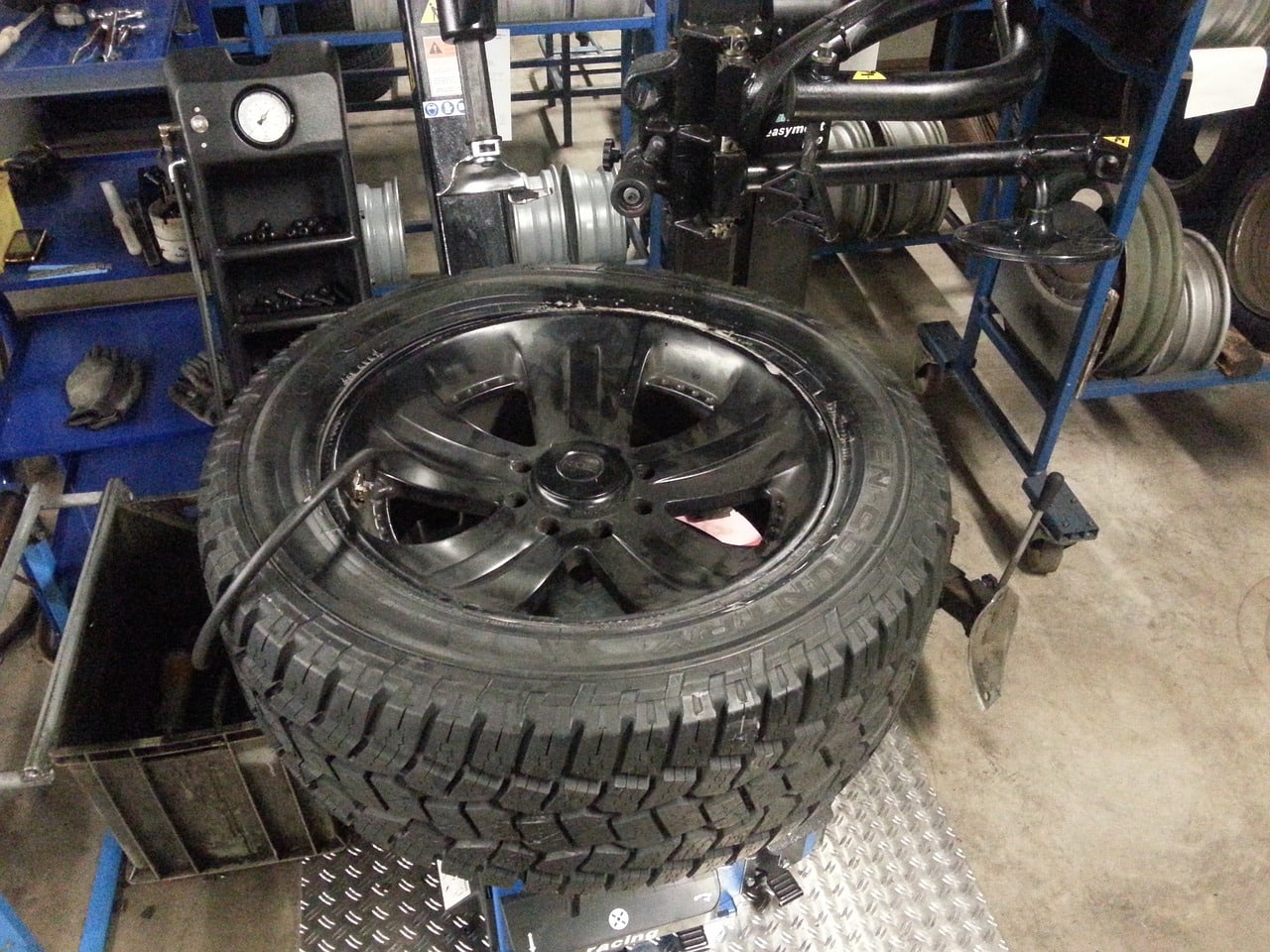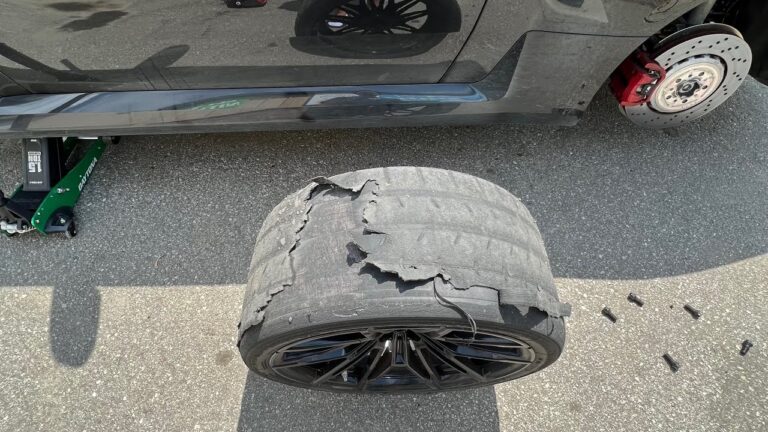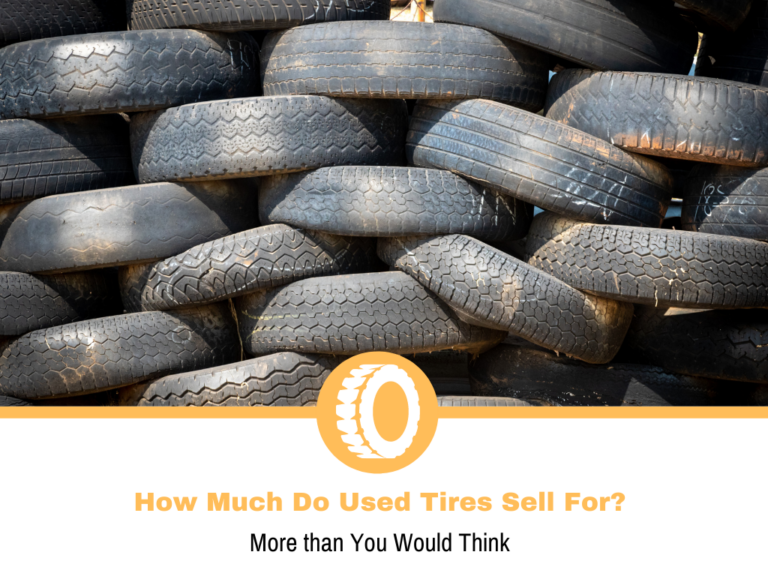Tire Temperature Rating Guide
Keeping yourself or your family safe on the road takes a lot of work, and one of the most important things you can do is make sure your car is in good shape. You need to know how to read and understand tire temperature ratings to ensure your car is in good shape.
As part of the Uniform Tire Quality Grade (UTQG) system, the US Department of Transportation requires manufacturers to put temperature ratings on tires. These ratings are the markings we all see on the sidewalls of tires.
All these random characters jumbled on the tire’s sidewall may throw off even the savviest tire shopper. This guide will explain tire temperature ratings and how to use them to stay safe.
Tire Temperature Rating Guide
The temperature rating of a tire is basically a measurement of how well it doesn’t get too hot while you’re driving. Heat is made when the tire rubs against a surface like a road. Basically, the better it will handle the heat while going faster, the higher the letter speed rating.
Temperature ratings for tires are the same everywhere, and they can only be earned in carefully controlled testing environments that are also the same everywhere.
There is a direct link between tire temperature ratings and heat resistance. Simply put, the temperature rating of a tire is how well it can handle the heat. To explain further, one of the main reasons why a tire’s rubber compound breaks down over time is that it makes heat.
So, if a tire’s temperature rating is A, it means that the rubber compound that makes up this tire is made to get rid of heat faster than tires with a temperature rating of C. This means a tire with an A temperature rating should last longer than one with a C temperature rating.
But this makes sense that tires rated A for temperature might be slightly more expensive.
Temperature Grade Ratings Explained
Based on the UTQG system, different grades for temperature are given. Each tire maker has to test their tires and give ratings for speed, treadwear, traction, and temperature. There are three main types of temperature ratings for tires:
Standard Tire C. The standard tire is the most common type, which can work in temperatures as high as 212 degrees Fahrenheit.
High-Performance Tire B. High-performance tires are made to be used in hot weather and can handle temperatures up to 230 degrees Fahrenheit.
Extreme Performance Tire A. Extreme performance tires are made to be used in scorching weather and can handle temperatures up to 249 degrees Fahrenheit.
The temperature grade rating tells you how well the tire can handle the heat. Heat can quickly build up along the tread when the tire is moving. This puts extra stress, pressure, and strain on the tire, especially in the summer and when it is scorching outside.
If a tire can’t handle the stress put on it, it can quickly fail or blow out, which can be very dangerous.
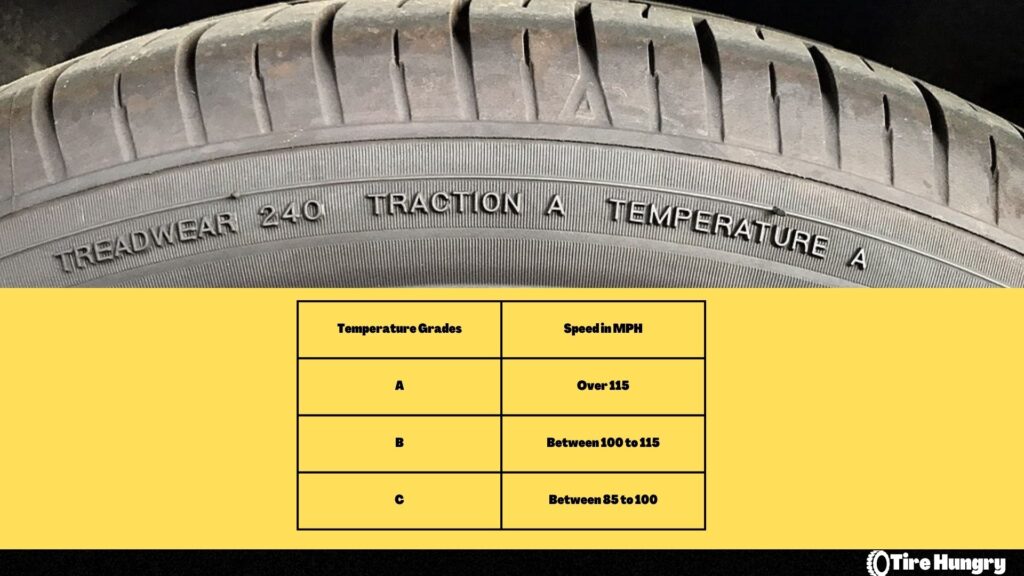
The temperature grade shows how well the tire doesn’t get too hot while it is being used. This rating system also uses A, B, and C to show how well the tire’s temperature durability is. A-rated tires can stay cool while moving, making them very safe to drive on in the summer.
Note that tires that don’t get at least a C grade can’t be sold in the US.
Speed Rating and Temperature Rating Connection
Now that you have an idea about the tire’s heat resistance and where to look for tires with a specific speed rating, it’s crucial to remember that the temperature grade isn’t the only factor to consider.
A temperature B tire may be superior to a C tire due to other characteristics such as traction grades or the treadwear rating. Thus it is essential to evaluate a wide range of data when trying to figure out which tire is ideal.
When choosing tires, it’s crucial to consider how you’ll drive, the weather where you live, and the kinds of roads you’ll be driving on. For example, if you live where the weather is usually mild, you might not need to spend a lot of money on tires with the highest ratings.
In areas with typical heavy precipitation and flooding, improved traction on wet roads may be more significant than increased top speed.
How Important Is It That Tires Have A Temperature Rating?
If you want to know what tire temperature ratings are, it’s essential to understand that they have everything to do with how long you can expect your tire tread to last. Tires with a higher temperature rating are made to keep the tire compound from getting too hot, making the tread last longer.
Why Is It Important for Drivers To Know The Tire Temperature Rating?
Tire temperature ratings are important because they tell drivers how well their tires can handle different temperatures depending on how hot it is.
If the tire can’t get rid of heat fast enough, it could start to break down, which could cause a blowout. During hot weather, when the pavement is hotter than usual, this can be especially dangerous.
Does The Temperature Rating Change How Long Your Tires Last?
Most people think that higher temperature ratings make tires last longer. The idea is that tires wear out faster in hot climates because of the higher temperatures, so a tire with a higher temperature rating should be able to handle these conditions better.
But, there isn’t solid proof that this is actually the case. In fact, most tire experts agree that tread wear is the main thing that affects how long a tire will last.
While tires with a higher temperature rating may be more resistant to the effects of heat, those with less tread will wear out just as quickly as those with a lower rating if the temperature never drops below the tire’s rating.
A tire’s tread design matters more than its temperature rating regarding its service life.
What Is the Difference Between the Temperature Rating and the Traction Rating?
The temperature rating shows how well a tire can handle very hot or cold temperatures. On the other hand, the traction rating shows how well a tire sticks to the road when it is wet or icy.
The traction grades are AA, A, B, and C, from best to worst. They are measured under controlled conditions on government-specified asphalt and concrete test surfaces. When choosing tires for your car, you should think about how well they grip and handle the heat.
Most of the time, tires with higher ratings will work better in extreme temperatures and bad weather. But, when you buy something for your car, it’s also essential to consider what it needs. For instance, if you are where the weather is usually mild, you might not need to spend a lot of money on high-rated tires.
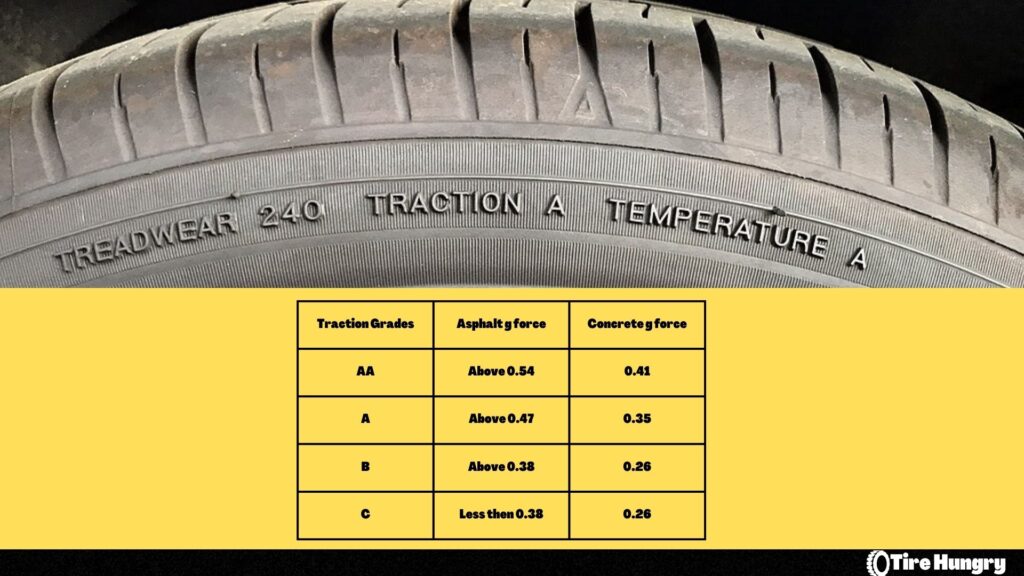
Who Determines the Tire Temperature Rating?
Manufacturers assign their tires a UTQG rating based on their quality control standards. The National Highway Traffic Safety Administration (NHTSA) may have set the bar that tires sold in the US must meet, but it does not conduct its own tire safety tests.
Each tire maker must put their newest models through rigorous testing before releasing them to the public. Tire manufacturers need to check their products’ ratings to ensure they are accurate, as mislabeling can cause serious accidents.
Independent companies focusing on tire manufacturing technology testing and development are typically contracted for this task.
However, since objective testing agencies don’t produce these ratings, there is no reliable rating system. So, it’s recommended to compare tires of the same manufacturer in terms of treadwear, traction, and temperature ratings.
Your search for a new set of tires will be simplified by the UTQG rating, which provides an overall assessment of the tires’ performance, treadwear rating, temperature durability, and overall surface traction.
Who Makes the Best Tire for Speed and Temperature Settings?
Unfortunately, there is no one-and-only answer to this question. There are tire manufacturers that cater solely to the needs of standard automobiles, while others specialize in producing tires for sport utility vehicles and other niche markets. A wide variety of manufacturers produce all-weather tires.
Do your homework and study tire reviews to find out what other drivers’ experiences have been with different tire manufacturers so you can make an informed decision.
Conclusion
Tire temperature rating is essential to know if you want to find the best tires for your car, get the best value, and ensure your tires last as long as possible. A temperature rating of B is an excellent standard average choice for most regular drivers.
Temperature B tires mean that the compound in this tire has been carefully tested in a lab to work well at speeds between 100 to 115 mph to eliminate heat. Even though a typical driver is not likely to drive at these speeds, it is essential to know that your tire has been tested at such.
Most of the time, a temperature rating of B will be enough for most drivers in ordinary, average driving conditions.
